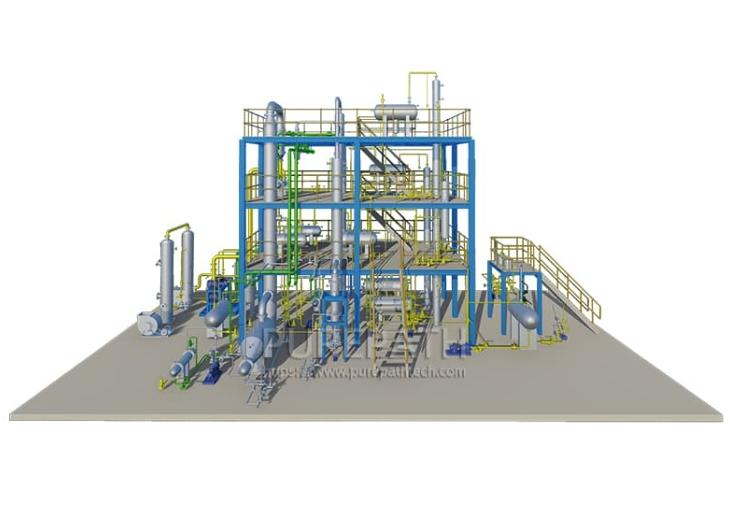Overcoming Limitations in Oxidative Desulfurization: Catalyst Deactivation and Byproduct Management

Oxidative desulfurization (ODS) has emerged as a promising technology for producing ultra-low-sulfur fuels, addressing stringent environmental regulations. Unlike conventional hydrodesulfurization (HDS), ODS operates under milder conditions and effectively removes refractory sulfur compounds like dibenzothiophene (DBT). However, two major challenges hinder its widespread industrial adoption: catalyst deactivation and byproduct management. Addressing these limitations is crucial for optimizing ODS efficiency and scalability.
1. Catalyst Deactivation: Causes and Solutions
Catalyst deactivation is a persistent issue in ODS, primarily caused by:
Carbon Deposition (Coking): Sulfur-containing intermediates can polymerize, forming carbonaceous deposits that block active sites.
Metal Leaching: Transition metal-based catalysts (e.g., Mo, W, V) may leach into the reaction medium, reducing catalytic activity.
Oxidation of Active Sites: Over-oxidation of metal species (e.g., Mo⁶⁺ → Mo⁴⁺) can diminish catalytic performance.
Mitigation Strategies
Developing Robust Catalyst Supports: Using high-surface-area supports like mesoporous silica (SBA-15), alumina, or carbon nanotubes enhances stability and reduces coking.
Bimetallic and Hybrid Catalysts: Combining metals (e.g., Mo-Co) or integrating polyoxometalates (POMs) with ionic liquids improves resistance to leaching.
Regeneration Techniques: Periodic calcination or solvent washing can restore catalyst activity by removing adsorbed species.
2. Byproduct Management: Challenges and Innovations
ODS generates oxidized sulfur compounds (e.g., sulfones and sulfoxides), which must be separated to prevent downstream contamination. Key challenges include:
High Polarity of Byproducts: Sulfones are highly polar, making extraction difficult with conventional solvents.
Emulsion Formation: Polar solvents (e.g., acetonitrile, DMF) may form emulsions, complicating phase separation.
Disposal Concerns: Sulfone-rich waste streams require proper treatment to avoid environmental harm.
Effective Byproduct Removal Techniques
Green Solvent Extraction: Ionic liquids (ILs) and deep eutectic solvents (DES) selectively extract sulfones without emulsion issues.
Adsorption Methods: Activated alumina, silica gel, or molecular sieves can adsorb sulfones for easy separation.
Biodegradation: Certain microbial strains can degrade sulfones into harmless byproducts, offering an eco-friendly disposal route.
Future Perspectives
To make ODS commercially viable, future research should focus on:
Designing Non-Leaching, Reusable Catalysts: Metal-organic frameworks (MOFs) and graphene-based catalysts show promise.
Integrating ODS with Other Processes: Coupling ODS with extractive or biodesulfurization could enhance efficiency.
Automated Continuous Systems: Developing flow reactors with real-time monitoring can optimize catalyst performance and byproduct removal.
Conclusion
While oxidative desulfurization offers a cleaner, more efficient alternative to HDS, overcoming catalyst deactivation and byproduct management remains critical. Advances in catalyst design, solvent selection, and process integration will drive the next generation of ODS technologies, paving the way for sustainable fuel production.
By addressing these challenges, the petroleum industry can achieve deeper desulfurization, ensuring compliance with environmental standards while maintaining cost-effectiveness.
- Art
- Causes
- Crafts
- Dance
- Drinks
- Film
- Fitness
- Food
- Spellen
- Gardening
- Health
- Home
- Literature
- Music
- Networking
- Other
- Party
- Religion
- Shopping
- Sports
- Theater
- Wellness


